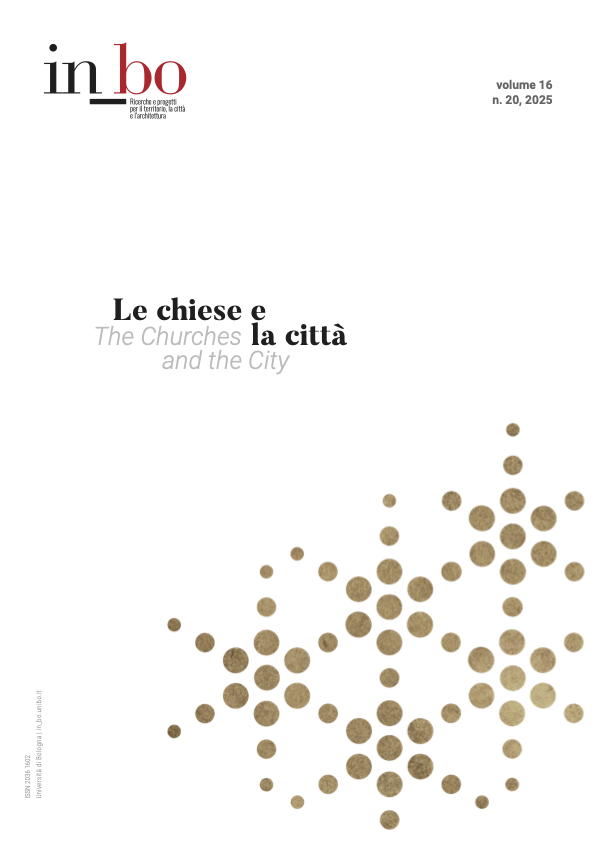Spaces of Gathering in the Post-Secular City
DOI:
https://doi.org/10.60923/issn.2036-1602/23078Keywords:
regeneration, urban spirituality, sacred spaces, secularization, inter-religious dialogueAbstract
The seventieth anniversary of the “New Churches” Office, founded in Bologna by Cardinal Giacomo Lercaro, offers an opportunity to reconsider the relationship between the Church and urban systems, and between churches and the city itself. As contemporary society becomes increasingly fluid, the Church faces what Pope Francis—beginning with Evangelii Gaudium—describes as a “missionary conversion.” This shift emphasizes the initiation of processes rather than the possession of spaces. It opens the doors of parishes to the city and encourages new forms of hybridization, which now extend even to worship spaces that have become redundant. The “liquid city” calls for a “liquid Church”—one able to leave behind its enclosures and to inhabit informal, hybrid, and everyday spaces. It interprets the public realm not as a place of distinction, but as a space for encounter and dialogue. The era of the fortress-parish, symbol of a socially shared religion rooted in stable models of belonging, appears to have come to an end. The outgoing Church, missionary and relational in nature, rediscovers its vocation at the heart of the post-secular city. Here, it acts as a social agent that not only endures urban transformation but also moves through it, regenerating meanings and relationships. Attention thus shifts from space to time: what now matters is the construction of community, a prerequisite rather than an assumed condition. Ecclesial spaces become non-specific, temporary, and hospitable, capable of holding and nurturing processes of social and spiritual cohesion. These are places where religious meaning does not precede action, but emerges from it—from events, encounters, and shared experiences.From this perspective, the Church no longer inhabits the city as a residue of the past, but as a creative actor capable of generating genuine proximity and embodied relationships within an urban fabric that is both secularized and mirrored in the digital sphere. It is a Church increasingly oriented toward configuring new processes of community, rather than constructing new buildings.
Downloads
Published
How to Cite
Issue
Section
License
Copyright (c) 2025 Luigi Bartolomei, Danilo Manzo

This work is licensed under a Creative Commons Attribution-NonCommercial 4.0 International License.





